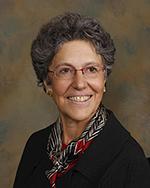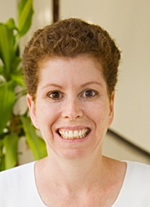Approximately 9% of men (1) and 13.1% (2) of women of childbearing age have problems with infertility or impaired fecundity, according to the National Institutes of Health and the Centers for Disease Control and Prevention. About 7% of couples in the US have difficulty getting pregnant (3). Trends in sperm count have declined by 50-60% since the 1970s. External factors are linked to these disturbing trends, with evidence indicating that exposures to endocrine disrupting chemicals (EDCs), pesticides, heat, and lifestyle factors are contributors (4). Maternal and paternal exposures to EDCs and air pollution have been found to influence the genes that are linked to sex steroid hormones, which impact fertility and pregnancy (5) (6).
In the third webinar in the series, “Generation Chemical: How Environmental Exposures Are Affecting Reproductive Health and Development,” Linda Giudice, MD, PhD, MSc, introduced the webinar and Jodi Flaws, PhD, and Audrey Gaskins, ScD, presented their research on how exposure to chemicals are affecting fertility including links between phthalates and follicle health and air pollution and live birth. Their findings inform air pollution standards, chemical regulatory reform, and equity-driven policies.
The Effects of a Phthalate Metabolite Mixture on Antral Follicle Growth and Sex Steroid Synthesis in Mice
Phthalates are used as solvents and plasticizers in a wide variety of consumer products. People are exposed to phthalates through ingestion, inhalation, and dermal contact. However, these compounds are quickly metabolized to more active compounds in several tissues. Although previous studies indicated that the phthalate metabolites reach the ovary, little was known about whether they are ovarian toxicants. Thus, Dr. Jodi Flaws and colleagues tested the hypothesis that phthalate metabolites influence the expression of genes involved in sex steroid synthesis, cell cycle regulation, cell death, oxidative stress, and key receptors, as well as production of sex steroid hormones by mouse antral follicles. Dr. Flaws reviewed data that show how mixtures of phthalate metabolites can directly impact follicle health.
Traffic-related Air Pollution, Folic Acid, and Female Fertility
Exposure to traffic-related air pollution has been consistently related to lower fecundity and fertility among women. On the other hand, there is growing acceptance that nutrients, such as folic acid, may enhance reproductive success among women and may reduce the toxicity of environmental pollutants. Using a large group prospective cohort of women undergoing assisted reproduction- where it is possible to define exact periods of air pollution exposure and directly observe many early reproductive outcomes – Dr. Audrey Gaskins and coauthors evaluated whether folate intake modified the relation between air pollution and live birth.
Featured Speakers
 Linda Giudice, MD, PhD, MSc, is a biochemist, gynecologist, and reproductive endocrinologist whose research focuses on environmental impacts on reproductive health, steroid hormone signaling in human endometrium, endometrial-placental interactions, endometrium as a mucosal tissue, and translational applications of human embryonic and endometrial stem cells. Her clinical interests are endometriosis, infertility, assisted reproduction, and implantation and ovulatory disorders. She is director of the Center for Research on Origins and Biological Consequences of Human Infertility and the UCSF Women's Reproductive Health Research Career Development Center.
Linda Giudice, MD, PhD, MSc, is a biochemist, gynecologist, and reproductive endocrinologist whose research focuses on environmental impacts on reproductive health, steroid hormone signaling in human endometrium, endometrial-placental interactions, endometrium as a mucosal tissue, and translational applications of human embryonic and endometrial stem cells. Her clinical interests are endometriosis, infertility, assisted reproduction, and implantation and ovulatory disorders. She is director of the Center for Research on Origins and Biological Consequences of Human Infertility and the UCSF Women's Reproductive Health Research Career Development Center.
 Jodi A. Flaws, PhD, is a Professor in Comparative Biosciences at the University of Illinois-Urbana/Champaign. She received a B.S. in Biology from St. Xavier University, a M.S. in Biology from Loyola University of Chicago, and a Ph.D. in Physiology from the University of Arizona. Following completion of the Ph.D. degree, Dr. Flaws performed postdoctoral research at Johns Hopkins University and the University of Maryland. Following postdoctoral training, Dr. Flaws accepted an Assistant Professor position at the University of Maryland, where she subsequently was promoted to Associate Professor. In 2006, Dr. Flaws accepted a position as Professor of Comparative Biosciences at the University of Illinois-Urbana/Champaign. Dr. Flaws’ research program is mainly focused on determining the mechanisms by which environmental chemicals affect the development and function of the ovary. Her research is funded by grants from the National Institutes of Health. She has published over 250 peer-reviewed papers that have involved extensive participation and authorship by graduate students, postdoctoral fellows, veterinary medical students, and undergraduate students. She is the recipient of the Department of Epidemiology and Preventive Medicine, University of Maryland Student Mentoring Award, the Patricia Sokolove Outstanding Mentor Award, the Dr. Gordon and Mrs. Helen Kruger Research Excellence Award, the Pfizer Animal Health Award for Research Excellence, the University Scholar Award, the Women in Toxicology Mentoring Award from the Society of Toxicology, and the Society for the Study of Reproduction Trainee Mentor Award.
Jodi A. Flaws, PhD, is a Professor in Comparative Biosciences at the University of Illinois-Urbana/Champaign. She received a B.S. in Biology from St. Xavier University, a M.S. in Biology from Loyola University of Chicago, and a Ph.D. in Physiology from the University of Arizona. Following completion of the Ph.D. degree, Dr. Flaws performed postdoctoral research at Johns Hopkins University and the University of Maryland. Following postdoctoral training, Dr. Flaws accepted an Assistant Professor position at the University of Maryland, where she subsequently was promoted to Associate Professor. In 2006, Dr. Flaws accepted a position as Professor of Comparative Biosciences at the University of Illinois-Urbana/Champaign. Dr. Flaws’ research program is mainly focused on determining the mechanisms by which environmental chemicals affect the development and function of the ovary. Her research is funded by grants from the National Institutes of Health. She has published over 250 peer-reviewed papers that have involved extensive participation and authorship by graduate students, postdoctoral fellows, veterinary medical students, and undergraduate students. She is the recipient of the Department of Epidemiology and Preventive Medicine, University of Maryland Student Mentoring Award, the Patricia Sokolove Outstanding Mentor Award, the Dr. Gordon and Mrs. Helen Kruger Research Excellence Award, the Pfizer Animal Health Award for Research Excellence, the University Scholar Award, the Women in Toxicology Mentoring Award from the Society of Toxicology, and the Society for the Study of Reproduction Trainee Mentor Award.
 Audrey Gaskins, ScD, is an Assistant Professor in the Department of Epidemiology at the Rollins School of Public Health at Emory University. Dr. Gaskins earned her doctoral degree in Nutrition and Epidemiology from the Harvard T.H. Chan School of Public Health in 2014. This training was preceded by a Bachelor’s of Science degree in Mechanical Engineering from Duke University in 2008. Her research focuses on understanding how environmental, dietary, and lifestyle factors experienced throughout the life course influence reproductive health in men and women. Her current R00 award from the National Institute of Environmental Health Sciences studies maternal exposure to air pollution and early adverse pregnancy outcomes with a focus on using metabolomics to identify possible mechanisms of action. Follow her on twitter at @audreyjane4.
Audrey Gaskins, ScD, is an Assistant Professor in the Department of Epidemiology at the Rollins School of Public Health at Emory University. Dr. Gaskins earned her doctoral degree in Nutrition and Epidemiology from the Harvard T.H. Chan School of Public Health in 2014. This training was preceded by a Bachelor’s of Science degree in Mechanical Engineering from Duke University in 2008. Her research focuses on understanding how environmental, dietary, and lifestyle factors experienced throughout the life course influence reproductive health in men and women. Her current R00 award from the National Institute of Environmental Health Sciences studies maternal exposure to air pollution and early adverse pregnancy outcomes with a focus on using metabolomics to identify possible mechanisms of action. Follow her on twitter at @audreyjane4.
The “Generation Chemical” webinar series is brought to you in partnership with the Collaborative on Health and the Environment(CHE) and the University of California, San Francisco Program on Reproductive Health and the Environment (PRHE),the International Federation of Gynecology and Obstetrics(FIGO), Alliance of Nurses for Healthy Environments (ANHE), Endocrine Society, the International Federation of Fertility Societies (IFFS), and UCSF’s Environment Research and Translation for Health Center (EaRTH).
This webinar was moderated by Linda Giudice, MD, PhD, MSc, Distinguished Professor, The Robert B. Jaffe, MD Endowed Professor in the Reproductive Sciences, Ob/Gyn, University of California, San Francisco, School of Medicine. It lasted for 70 minutes and was recorded for our call and webinar archive.
